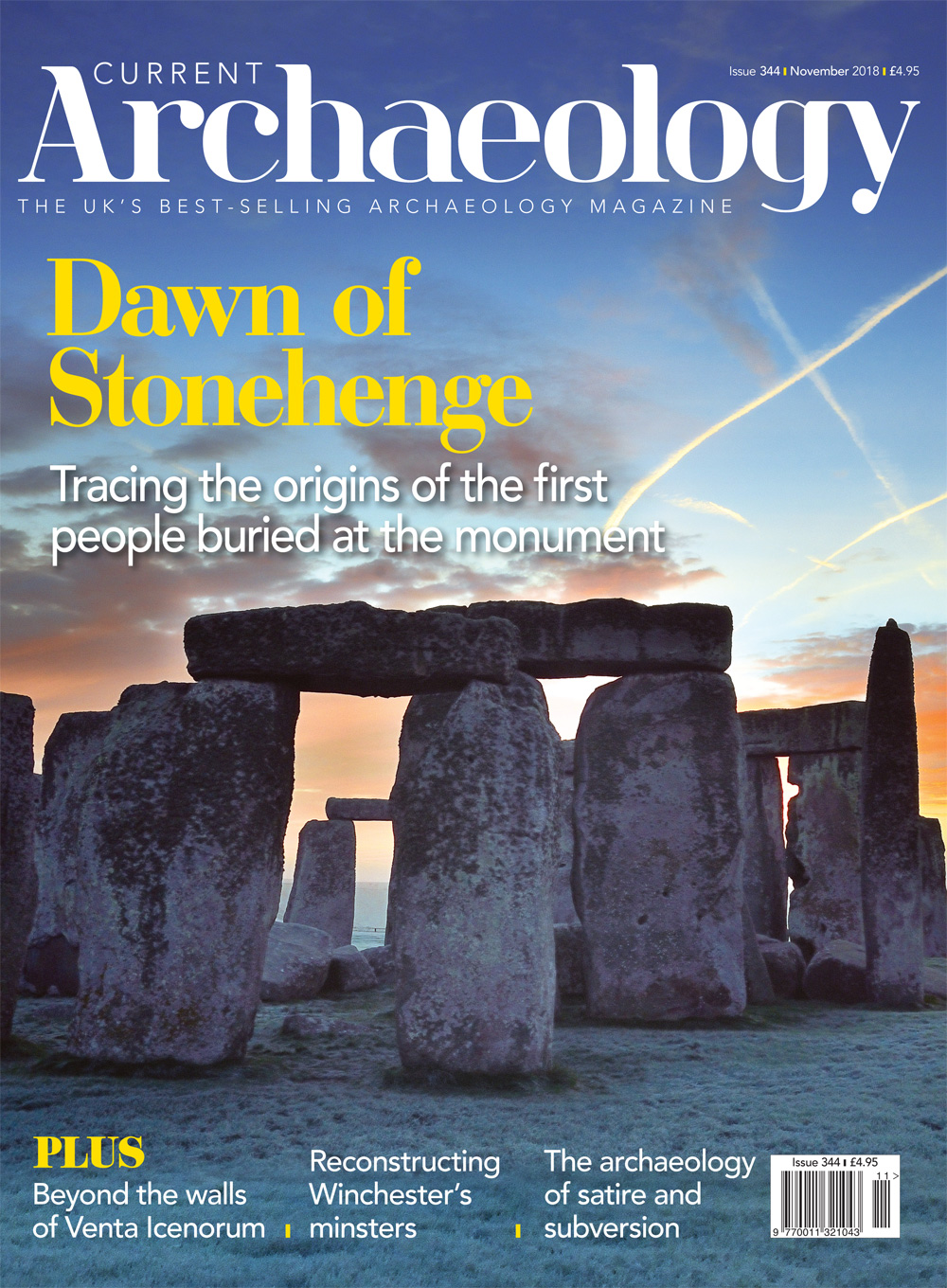On 26 October 1918, the nation received an unusual gift: Stonehenge. The monument had been bought at auction by Sir Cecil Chubb, who later presented it to the British government. Marking the centenary of this episode, we are exploring one of the newest discoveries from the site: the origins of some of the people whose cremated remains were buried there in the earliest days of its construction.
The Roman regional capital of Venta Icenorum (modern Caistor St Edmund) remained a focus of local power into the 8th-9th century. Previous work within its walls revealed a wealth of finds, and this summer the Caistor Roman Project has been investigating the remains of a temple and corridor villa at an enigmatic site just outside its bounds.
If early medieval Caistor was an influential place, late Saxon Winchester was on another level. The city’s minsters star in a new book that traces their 1960s excavation and reconstructs these impressive structures in detailed drawings. At its height, Pleshey Castle would also have been imposing – today, it is one of England’s best-surviving examples of a motte-and-bailey castle. Recent research has illuminated how it developed.
Castles and minsters are bastions of authority – but what can archaeology tell us about those who refused to conform? A new exhibition at the British Museum showcases objects that preserve the voices of rebels ancient and modern.
Sometimes, though, rebellion against the status quo can have devastating consequences: the culmination of the English Civil War saw churches across the country attacked in a wave of iconoclasm. What has a project in Cambridgeshire revealed about this ecclesiastical upheaval?
Carly Hilts
/n
IN THIS ISSUE:/n
FEATURES/n
OUT OF THE ASHES/n
Seeking the origins of the first people of Stonehenge
Where did the Neolithic people buried at Stonehenge come from? New isotopic analyses of cremated human bone from the site hint at surprisingly far-flung answers.
PUSHING THE BOUNDARIES/n
Excavating outside the walls of Venta Icenorum
During dry spells, parchmarks show an unusual diagonal road leading from the Roman town of Venta Icenorum to the site of a temple and corridor vila. What can excavation reveal about this enigmatic spot?
OUT WITH THE OLD, IN WITH THE NEW/n
Searching for Winchester’s Anglo-Saxon minsters
Martin Biddle first came to Winchester in 1961 to excavate the city’s early medieval minsters. Now these impressive ecclesiastical structures have been reconstructed in vivid new drawings.
RETHINKING PLESHEY CASTLE/n
New discoveries from old records
A research project at Pleshey Castle, one of England’s best-surviving examples of a motte-and bailey fortification, is transforming our understanding of the site.
DISSENT OF MAN/n
Exploring the archaeology of satire and subversion
A new British Museum exhibition is exploring the ways people have rebelled throughout history, often in cleverly covert ways.
‘MR CRUMWELL COME TO TOWNE’/n
Piecing together Civil War iconoclasm in Cambridgeshire
To what lengths did Oliver Cromwell and his men go to forcibly remove the ‘popish’ elements of English churches? New evidence from Cambridgeshire may provide the answers.
NEWS/n
First evidence of prehistoric occupation on Staffa?; Spinning the tale of prehistoric textiles; New evidence found at Shakespeare’s Theatre; Roman villa revealed in Cambridge; Connecting the dots at Kinneil House; Science notes; Carved in stone: recording Scotland’s prehistoric rock art; Finds tray
REGULARS/n
Comment
Joe Flatman excavates theCAarchive
Context
Lord of the Isles: Dunyvaig Castle, Islay
Reviews
Sacred Britannia: the gods and rituals of Roman Britain; Reindeer Hunters at Howburn Farm, South Lanarkshire; The Science of Roman History: biology, climate, and the future of the past; The First Farmers of Europe: an evolutionary perspective; Ragstone to Riches; The Archaeology of Oxford in 20 Digs
Calendar
Our selection of exhibitions and events
Exhibition
Spellbound: magic, ritual, and witchcraft at the Ashmolean Museum
Sherds
Chris Catling’s irreverent take onheritage issues
Odd Socs
The Chippendale Society

